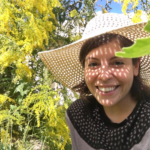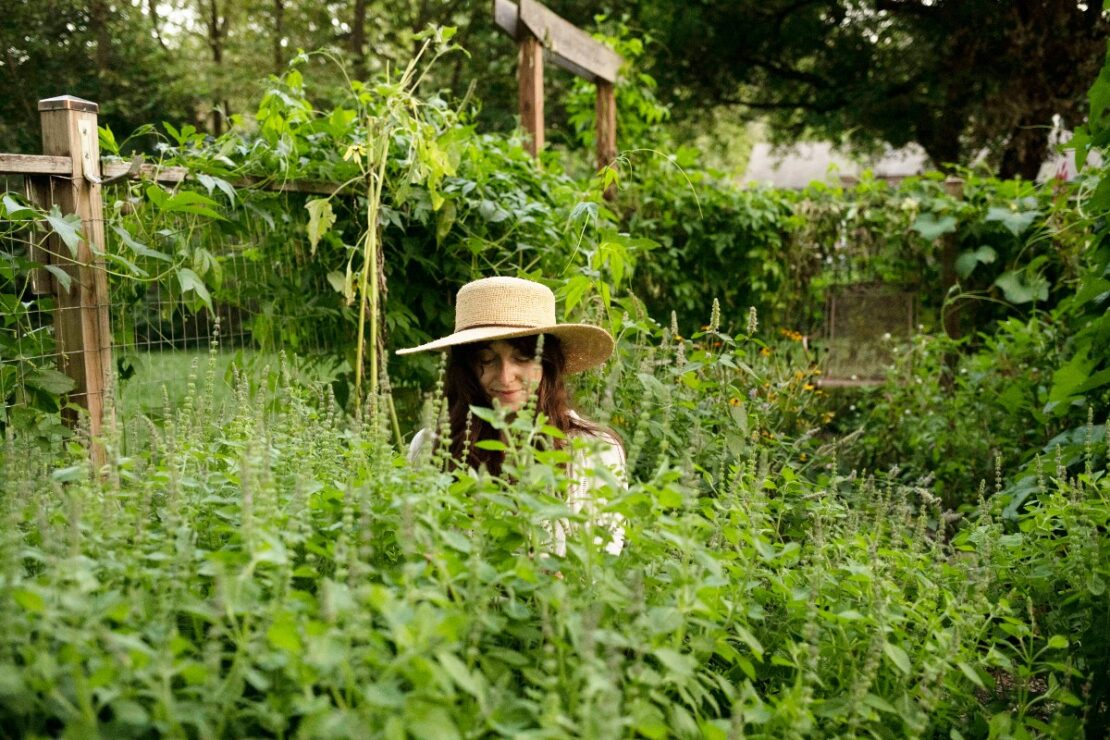
4 Organic Soil Amendments for the Herb Garden
If you find yourself eager to get an herb garden growing but wondering if you’re too late, you’re not! Late spring can be a great time to plant established plants and get growing. And if you’re looking to cultivate an herb garden that is sustainable, tending to the soil with organic soil amendments will be one important aspect of helping it to thrive.
Soil serves as a vital medium for plant growth providing essential nutrients, physical support, and holding water. Caring for the soil is fundamental for the gardener. Whether gardening in beds or in pots, we must tend the soil. Soil amendments can help us greatly in this task. To amend something means to change or modify something for the better. So when we’re talking soil amendments, we’re referring to practices and materials used to enhance soil structure, nutrient content, and overall productivity.
Organic vs. Inorganic Soil Amendments
There are two broad umbrellas soil amendments fall under: organic and inorganic. In this instance, when we talk about organic, we’re not talking about USDA organic; we’re talking about organic as a chemistry term. In chemistry, organic refers to molecules made up of carbon and at least one other element (Carpenter, 2021). Things like compost and bone meal are examples of organic amendments because they contain carbon. Inorganic soil amendments include plastics, vermiculite, sand, gravel, and the like, as they do not contain carbon.
Organic soil amendments can be used to enhance soil stability, porosity, permeability, and water retention. They also provide a good food source to support a healthy and flourishing decomposer community, which will work to break down organic matter to provide essential nutrient replenishment to garden soil over time (Davis & Whiting, 2017). Let’s look at the different kinds of soil amendments we can use to make our soil better, and when we might employ them in our own gardens.
4 Organic Soil Amendments for the Herb Garden
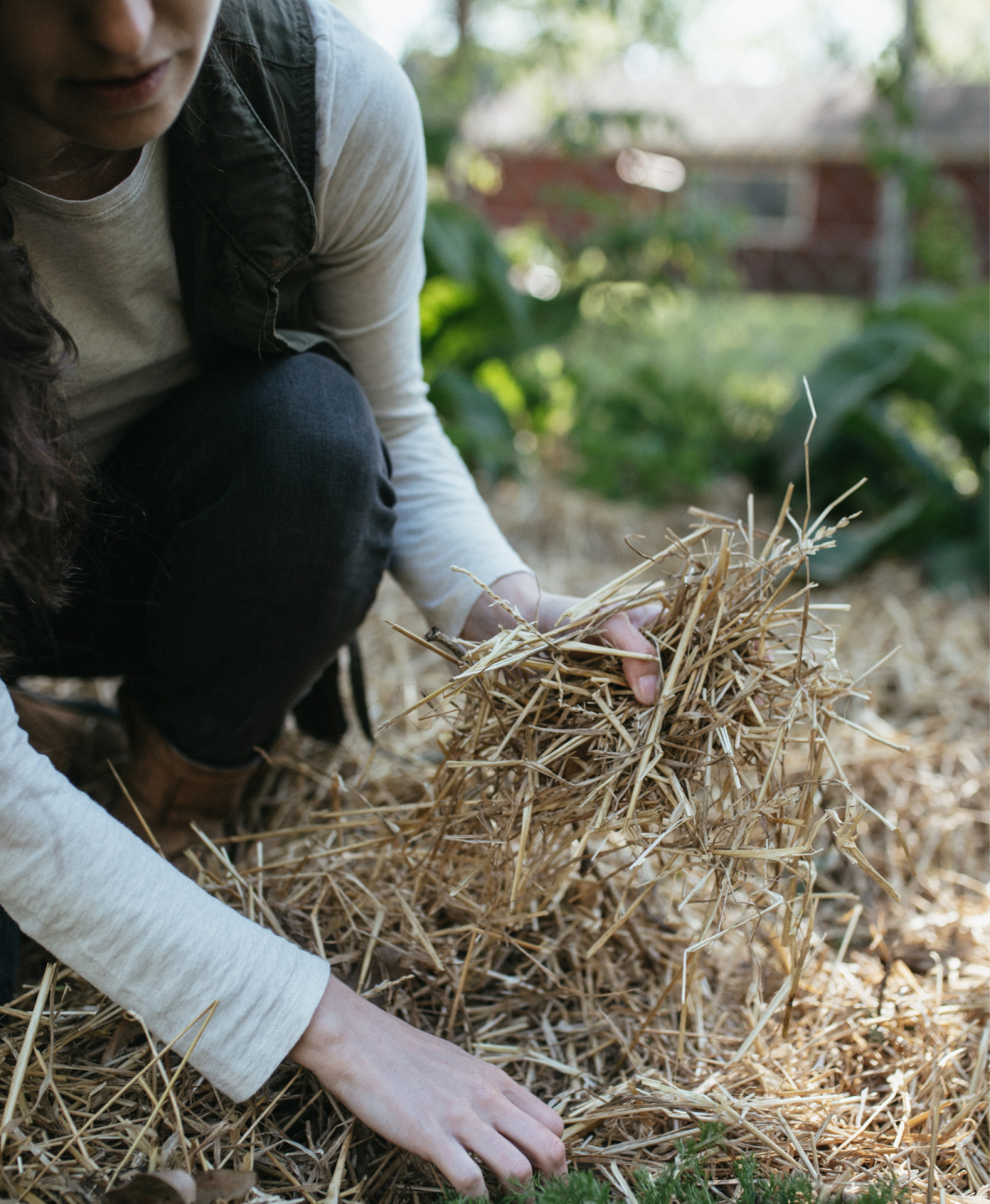
Organic Mulch
Mulch is used as an insulating layer on top of the soil to protect against extreme temperatures and water loss. Mulching with organic materials can help to improve soil conditions by preventing weed growth and maintaining moisture levels. Woodchips, leaf litter, yard waste, straw, and even newspaper can all be used as organic mulch. As organic mulches break down, they add organic material and vital nutrients to the soil over time (Powers, 2011).
When it comes to mulch, less is more. Too much mulch can smother plants and encourage the growth of fungus and mold in the soil and on plants. Using just what is necessary to get the job done will help prevent these problems from arising and keep mulching cost-effective as well. Two to 4 inches of mulch covering the soil surface is plenty to prevent weeds or grass from creeping into garden beds (City of Thornton, n.d.).
During the growing season, be careful not to pile mulch up around the base of the plants. Leaving the plant body clear of mulch helps to prevent pests and rot (California Native Plant Society, 2022). Reapply mulch as the material breaks down; rates of decomposition will vary based on the type of material used. Straw and leaf mulch break down much faster than bark or wood chips. When reapplying, do so only to the original depth of 2-4 inches above the soil surface, to avoid smothering (Chicago Botanic Garden, n.d.).
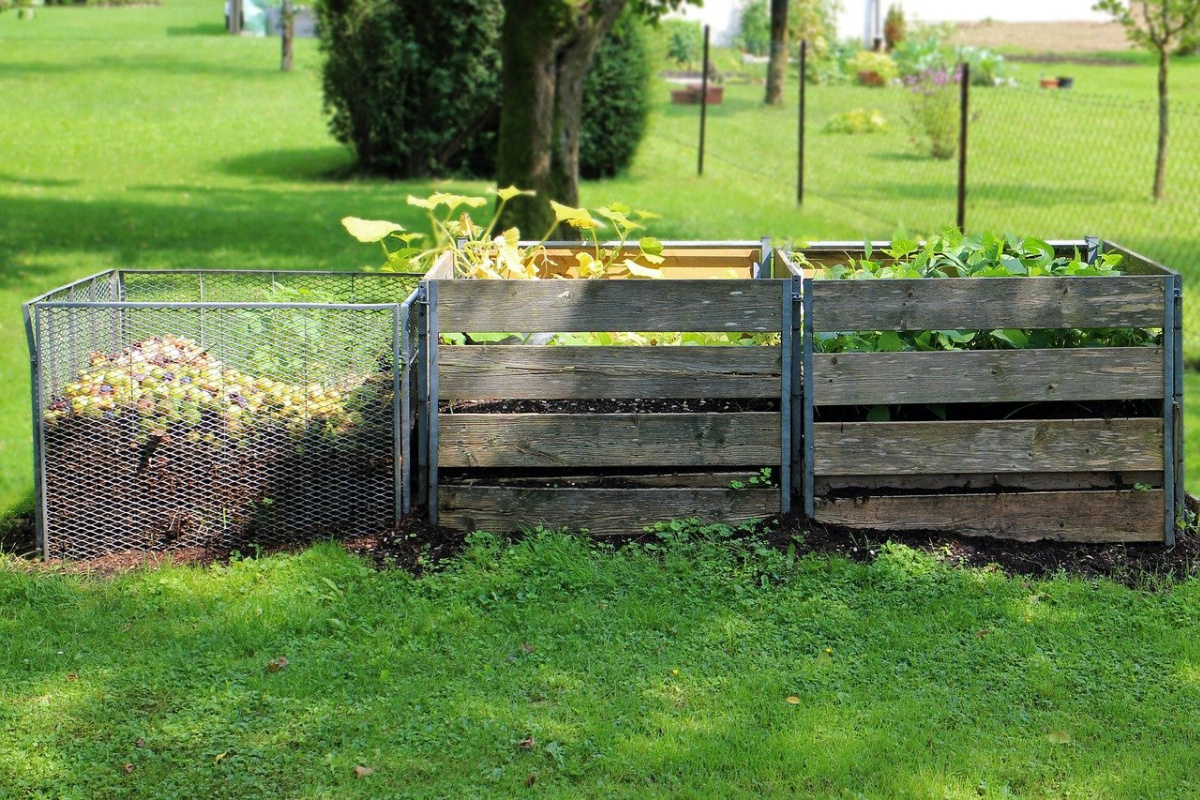
Compost
Compost is the gardener’s panacea. It enriches the soil with organic matter which improves soil structure whether starting with a sand or clay-heavy native soil, and enhances nutrient availability for plants (Whiting et al., 2023). Adding compost to our garden beds can increase soil moisture retention, promote beneficial microbial activity, and enhance plant vitality (Adugna, 2013). There’s really nothing compost can’t do.
Composting at home with kitchen and yard scraps is a beautiful way to reduce landfill waste and bring ourselves into relationship with the life-death-life cycle of nature. Learn more about how to start composting at home in this Herbal Academy article, How to Compost: Getting Started Guide. . Composting takes time and tending before it is effectively decomposed and ready to go in the garden, but good compost can be found at most local garden centers and is ready for use this season.
For the first application, spread a 3-4 inch layer of compost evenly over the soil surface, and incorporate it into the top 8-12 inches of soil. Reapply compost to garden soil annually. For reapplication, cover the soil surface with a layer less than an inch thick and work it into the soil 8-12 inches down, or as deep as possible without disturbing the roots of any existing plants in the beds (Whiting et al., 2023).
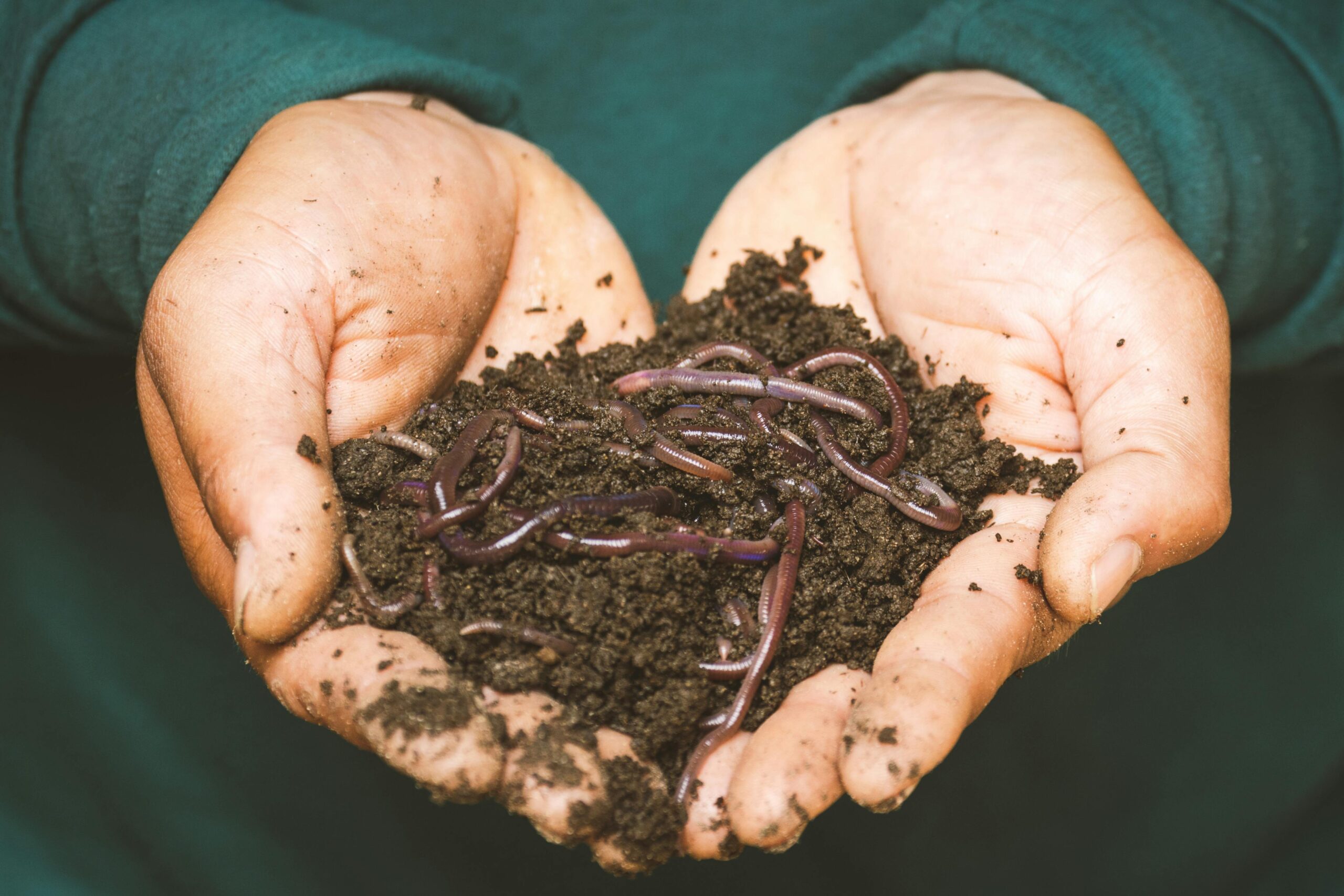
Worm Castings or Vermicompost
Earthworms are incredible decomposers. They ingest various organic wastes and, through their digestive processes, turn them into a nutrient-dense all natural fertilizer called worm castings. Similarly to compost, worm castings add organic material as well as vital nutrients to garden soil. Vermicomposting, composting with worms, produces a much finer end product than traditional composting because earthworms are very small creatures. This increased surface area also makes the nutrients in the casting more readily available to our plant friends (Fornes et al., 2012). I typically use compost as a kind of general bed dressing to enhance the overall health of the soil before I do any planting. The larger particles in the compost break down over the course of many seasons, contributing organic material and building the native soil slowly and steadily.
However, I use vermicompost differently. Rather than adding worm castings as an all-over amendment, I employ them in more pointed fertilizer-type applications. When transplanting, potting, or repotting plants, mix one part worm castings in with four parts soil to give a boost to plants as they adjust to their new homes. Vermicompost may also be used as a top dressing by working it into the top 1-2 inches of soil, avoiding direct contact with the plant (Whiting et al., 2023).

Organic Fertilizers
Fertilizers are nutrient-specific soil additives. When the soil is in good health, these are very seldom necessary, but when first beginning a garden there might not be healthy soil to begin with. In this instance, fertilizers can be a great help while we work to build soil health long term through the addition of organic matter. Different organic fertilizers provide different nutrients and are used in varied ways according to the nutrients that they contain.
The three key nutrients for vibrant, healthy plants are nitrogen (N), phosphorus (P), and potassium (K). Nitrogen (N) helps promote the growth of foliage. Phosphorus (P) aids in the transfer and storage of energy in plants, thus assisting plants in creating seeds and flowers as well as developing strong roots and stems. Potassium (K, also seen as potash) plays a role in moving water and nutrients throughout plants; a lack of potassium, on the other hand, can stunt plant growth (Martin & Berg, 2014).
Fish fertilizer is high in nitrogen, and can be used to give our leafy herbs a boost when they seem a little stressed or strained. If your plant is slow to grow and the leaves are pale or yellowing a nitrogen boost can be helpful (University of California, 2021). Bone meal fortifies our soil with phosphorus and may prove helpful when planting bare roots in the garden (Hardgrave, 1991). Phosphorus can be helpful when a plant’s leaves are growing smaller than usual, become curled or oddly shaped, or drop prematurely (University of California, 2021). In The Living Garden author Jane Powers (2011) suggests using large quantities of comfrey (Symphytum spp.) steeped in water to make a homemade liquid fertilizer rich in potassium to grow stronger, more fruitful plants. Likewise, banana peel water has been rising in popularity due to its purported potassium power punch for plants. Potassium can be helpful if your plants seem to suffer from water stress, by signs of wilting or drooping (Pennsylvania State University, n.d.).
Before using any fertilizer product, read the directions from the manufacturer in full. Follow all directions and safety precautions from the manufacturer when applying fertilizers. It is possible to overdo it, even with natural fertilizers, which can lead to plant damage. Most fertilizers, even most organic fertilizers, should not be applied directly to plant material. Always read and follow package directions when applying or reapplying fertilizer in your garden.
In Closing,
An investment in soil health is an investment in the health of the harvest. Incorporating organic amendments into the soil can help to bolster the health and vitality of garden plants. These amendments not only provide immediate nutrition to plants, they also help long term to enhance the soil structure, water retention, and nutrient-holding capacity.
It is not necessary or suitable to use every soil amendment in every garden. When careful consideration is given to the needs of the garden, the resources required, and the obstacles we face, we can apply the right amount of nurturance in the right measure. This reciprocal care of a garden is its most abundant fruit.
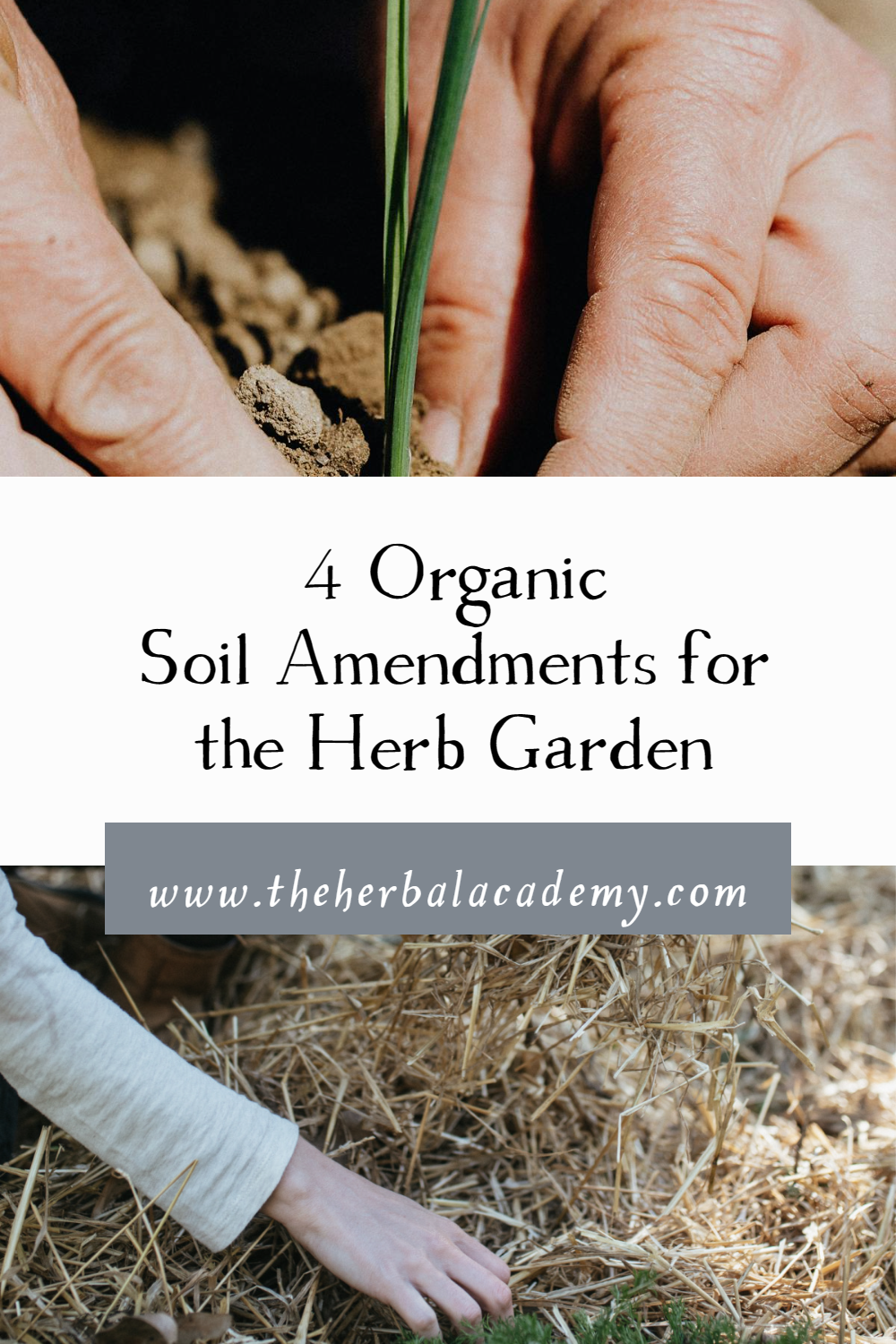
REFERENCES
Adugna, G. (2013). A review on impact of compost on soil properties, water use and crop productivity. Academic Research Journal of Agricultural Science and Research, 4(3), 93–104. DOI: 10.14662/ARJASR2016.010
California Native Plant Society. (2022). Mulching basics. https://www.cnps.org/gardening/prepping-and-planting/mulching-basics
Carpenter, K.G. (2021). Explainer: In Chemistry, what does it mean to be organic? Science News Explores. https://www.snexplores.org/article/explainer-chemistry-organic-carbon
Chicago Botanic Garden. (n.d.). Mulch. https://www.chicagobotanic.org/sites/default/files/pdf/plantinfo/mulch.pdf
City of Thornton. (n.d.). Correct mulching applications – city of Thornton. City of Thornton. https://www.thorntonco.gov/thornton-parks/Documents/forestry/mulch.pdf
Davis, J.G., & Whiting, D. (2017). Choosing a soil amendment – 7.235. Colorado State University Extension. https://extension.colostate.edu/topic-areas/yard-garden/choosing-a-soil-amendment/
Fornes, F., Mendoza-Hernandez, D., Garcia-de-la-Fuente, R., Abad, M., & Belda, R.M. (2012). Composting versus vermicomposting: A comparative study of organic matter evolution through straight and combined processes. Bioresource Technology. https://www.sciencedirect.com/science/article/abs/pii/S0960852412007729
Hardgrave, P. (1991). Improving Garden Soils. NK Lawn and Garden Co.
Martin, D.L., & Berg, M.M. (2014). Rodale’s basic organic gardening: A beginner’s guide to start a healthy garden. Rodale.Powers, J. (2011). The living garden: A place that works with nature. Frances Lincoln Ltd. Publishers.
Pennsylvania State University. (n.d.). Potassium deficiency. Department of Plant Science. https://plantscience.psu.edu/research/labs/roots/methods/methods-info/nutritional-disorders-displayed/potassium-deficiency
University of California. (2021). How to manage pests. UC IPM Online. https://ipm.ucanr.edu/PMG/GARDEN/PLANTS/DISORDERS/nitrogendeficiency.html#:~:text=Slow%20growth%20and%20uniform%20yellowing,than%20normal%20and%20drop%20prematurely.
University of California . (2021). How to manage pests. UC IPM Online. https://ipm.ucanr.edu/PMG/GARDEN/PLANTS/DISORDERS/phosphorusdeficiency.html#:~:text=Symptoms%20vary%20greatly%20when%20plants,than%20normal%2C%20or%20drop%20prematurely.
Whiting, D., Card, A., Moravec, C., Wilson, C., Reeder, J., Goldhamer, D., Oleszak, H., & Hilgert, C. (2023). Soil Amendments. Colorado State University Extension. https://cmg.extension.colostate.edu/Gardennotes/241.pdf

